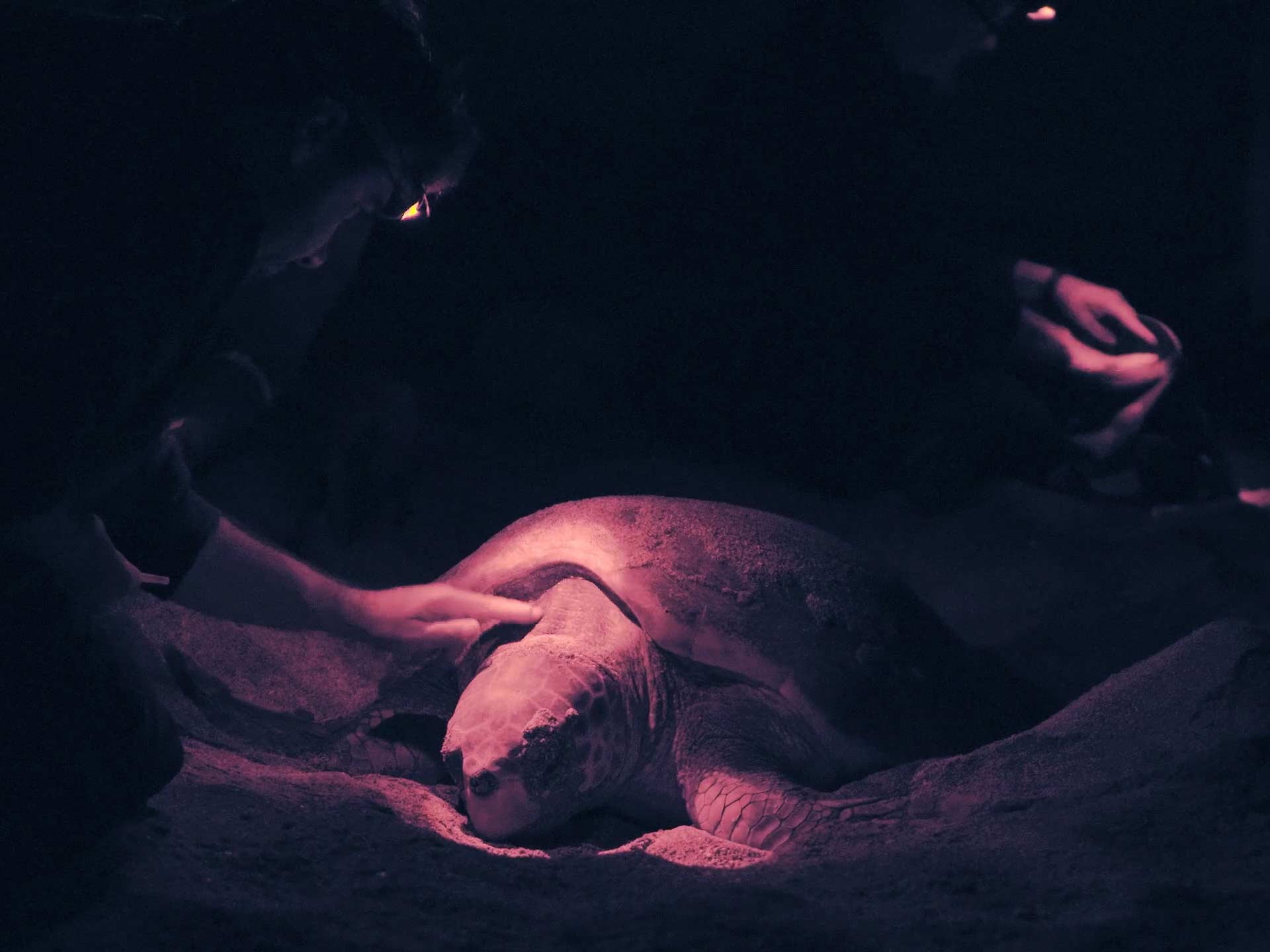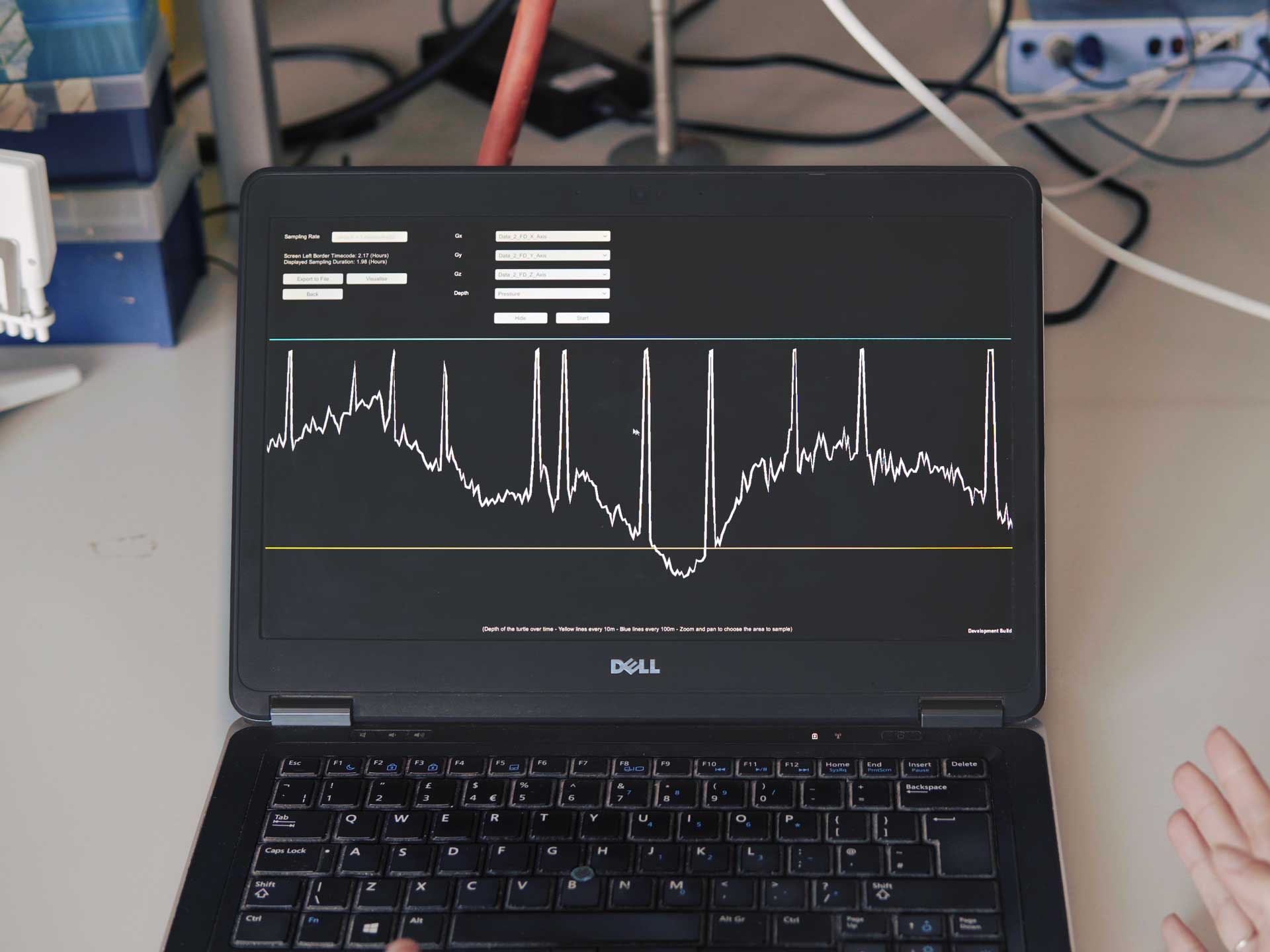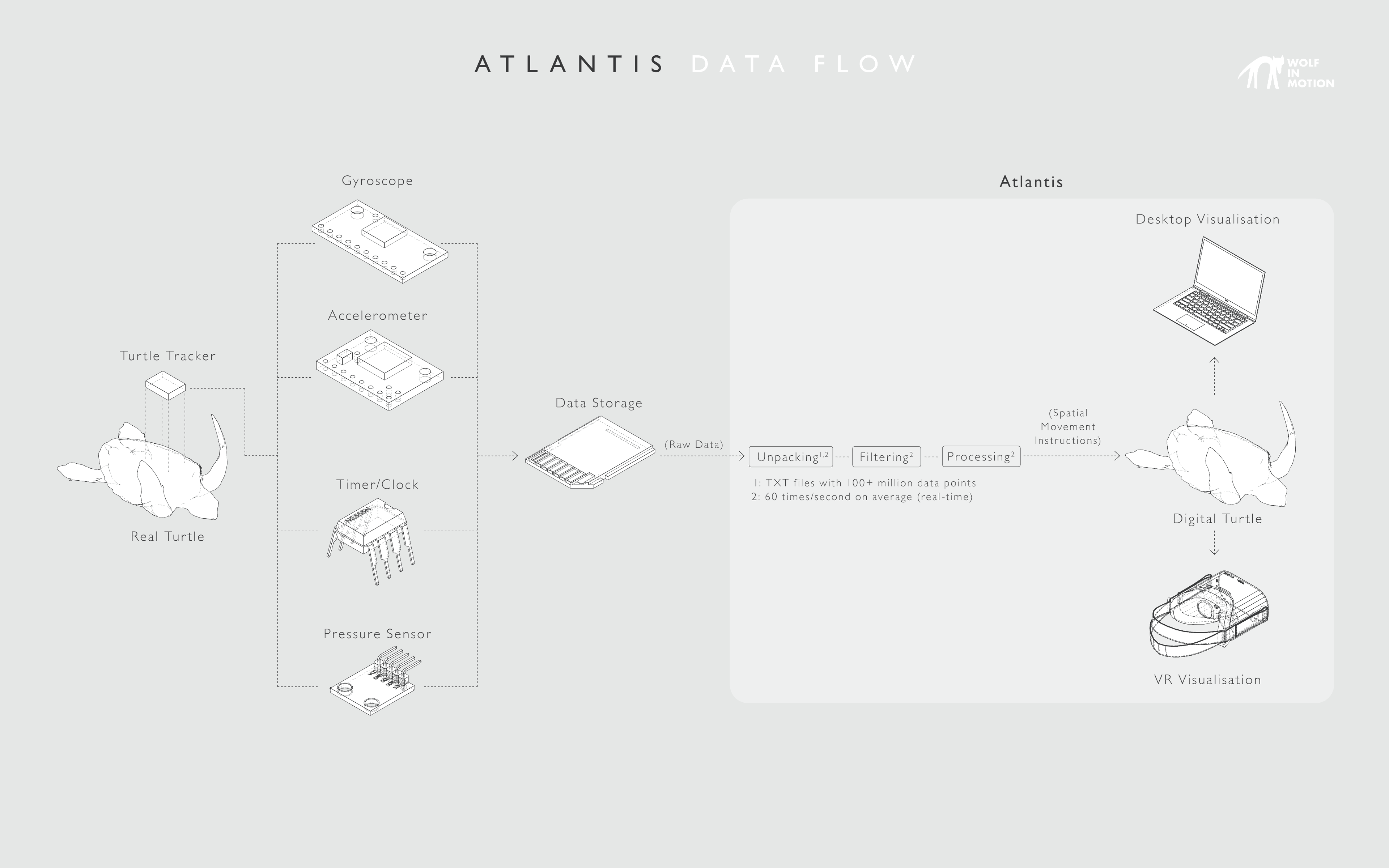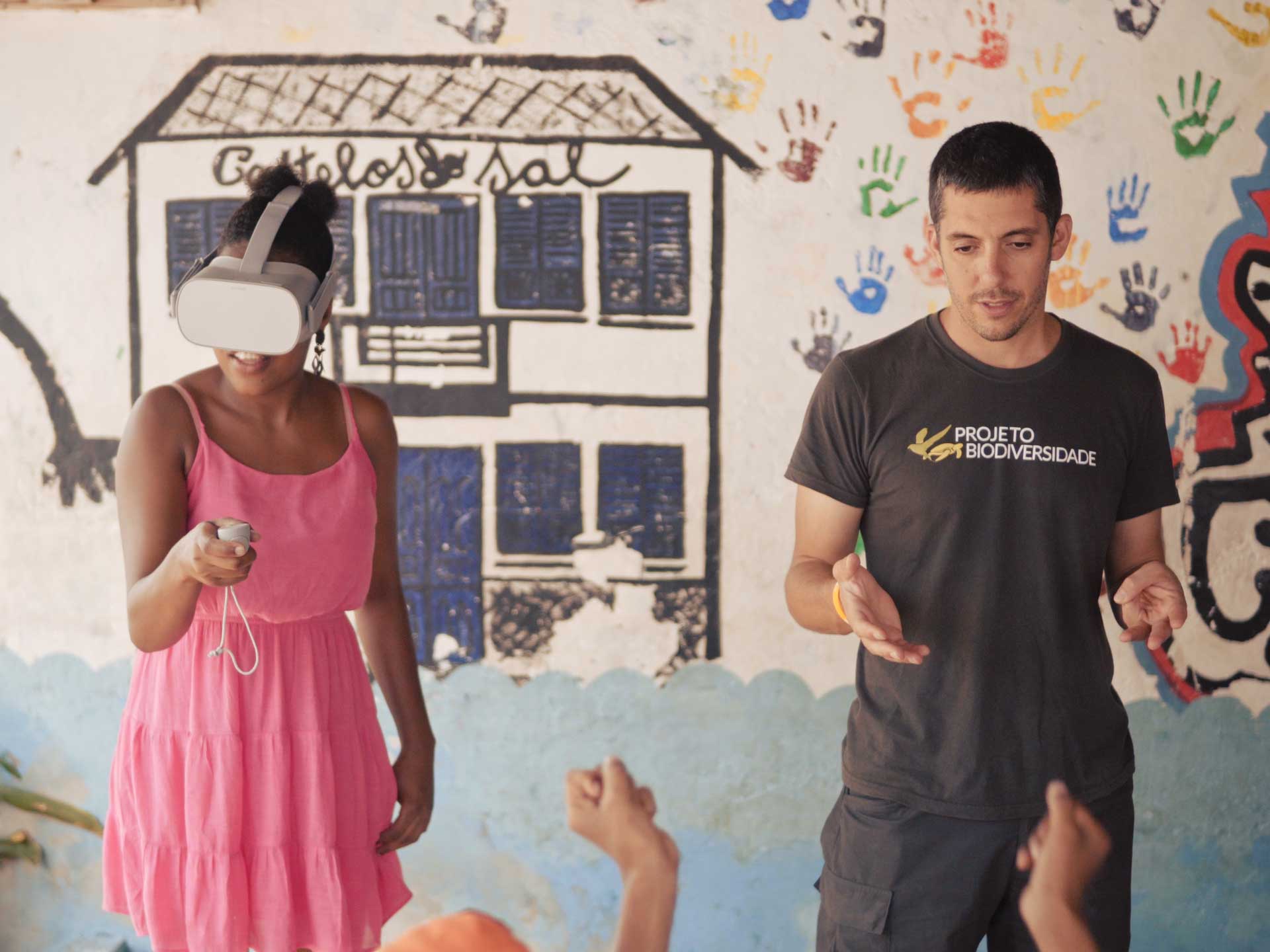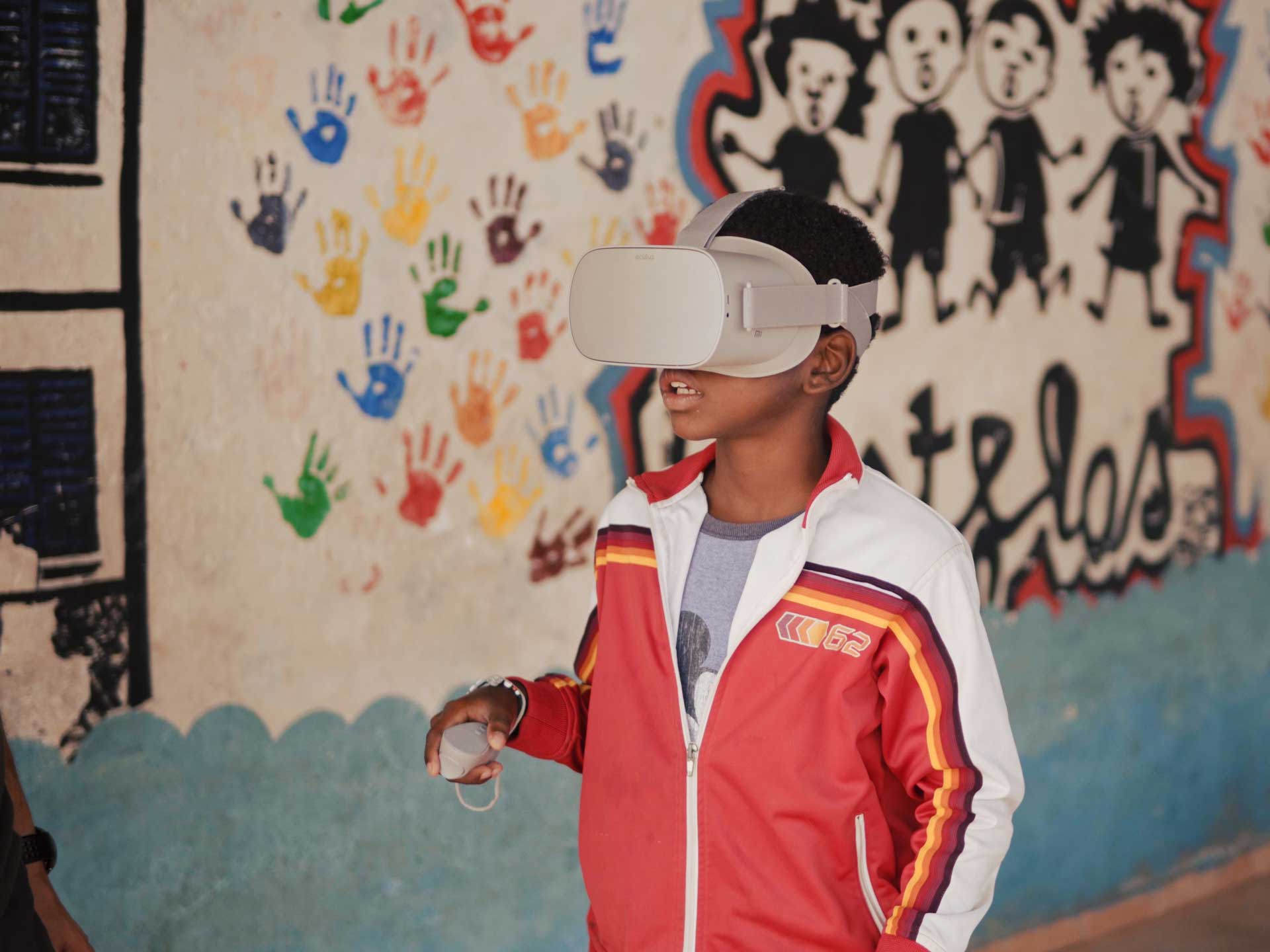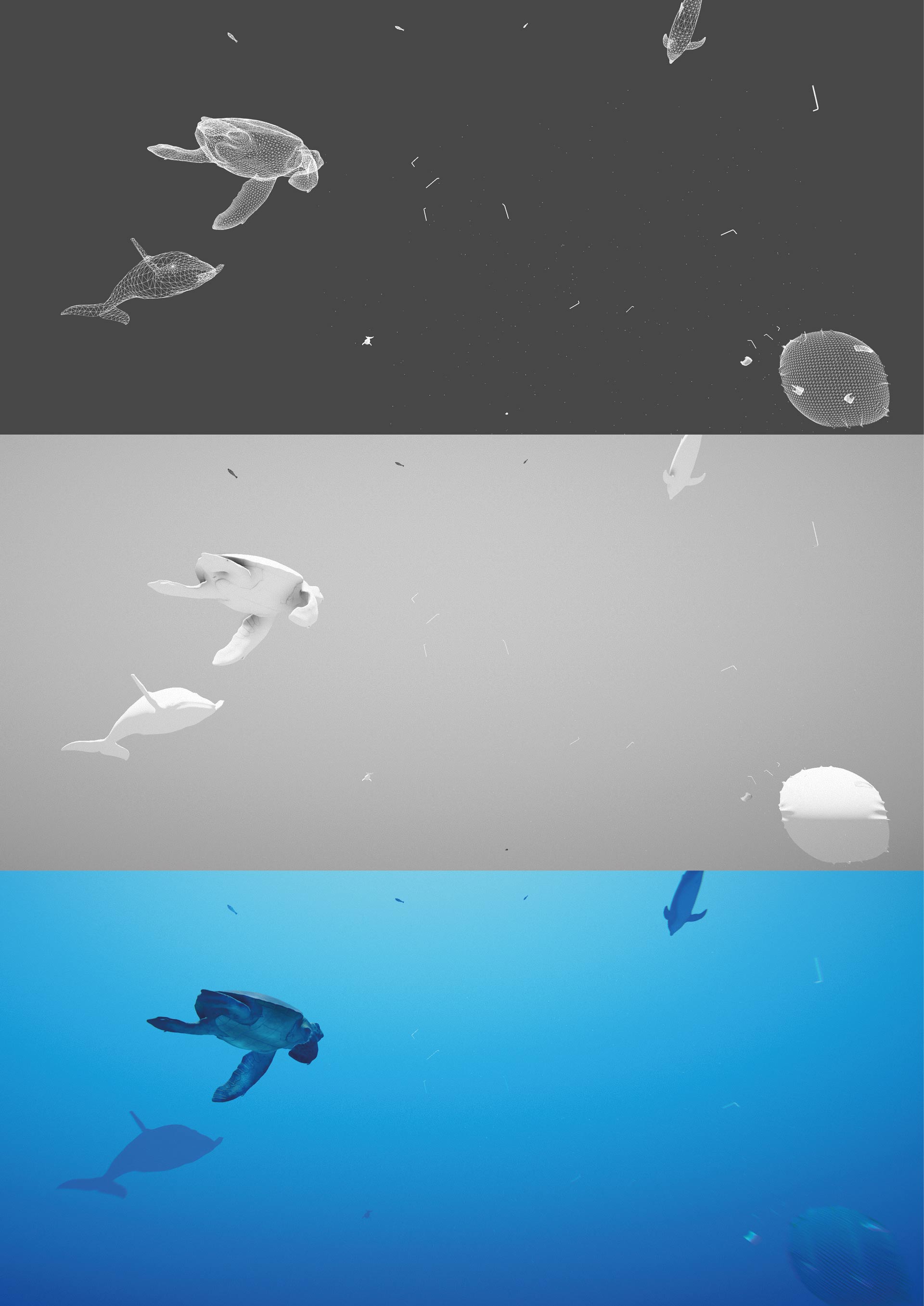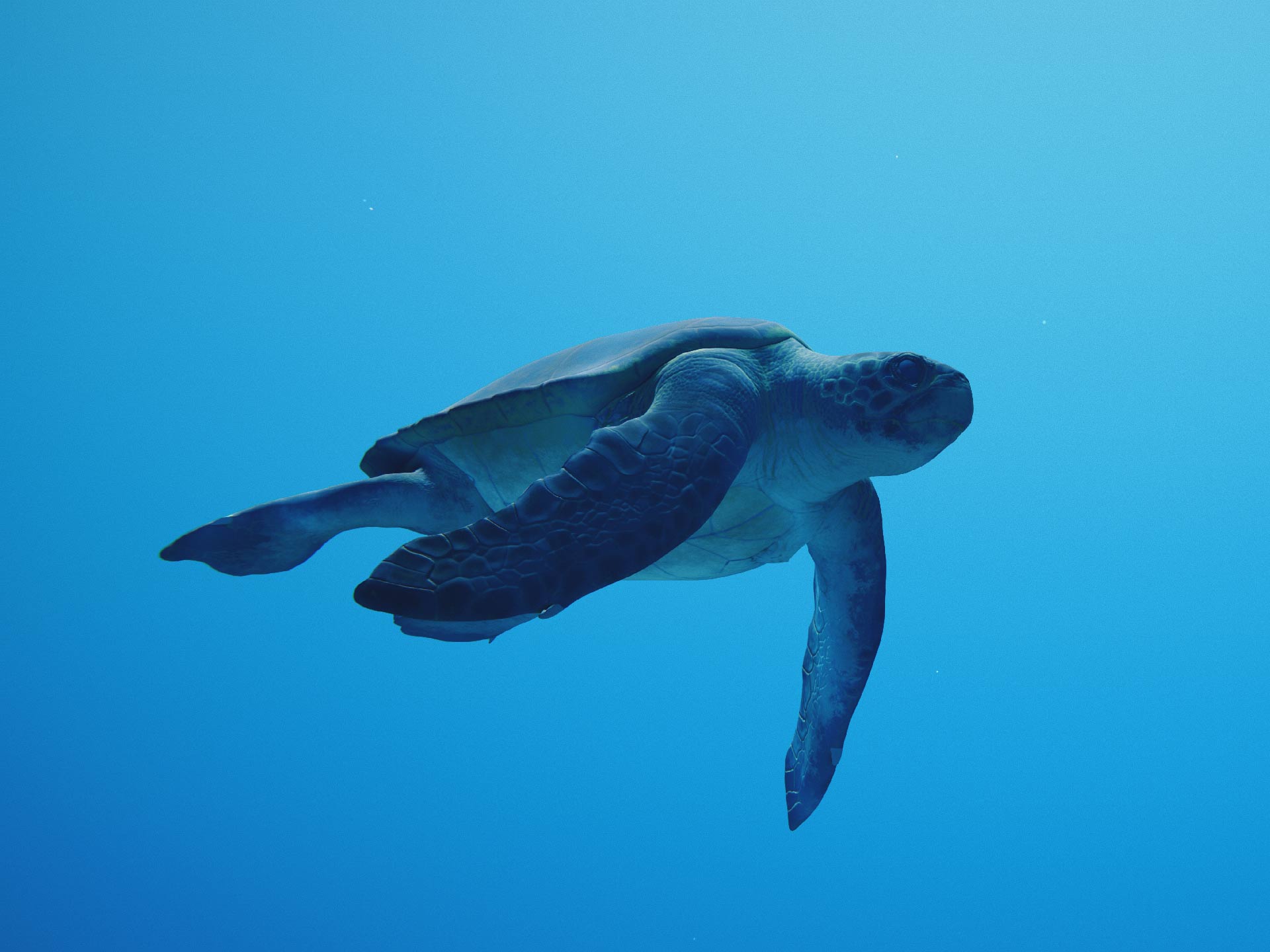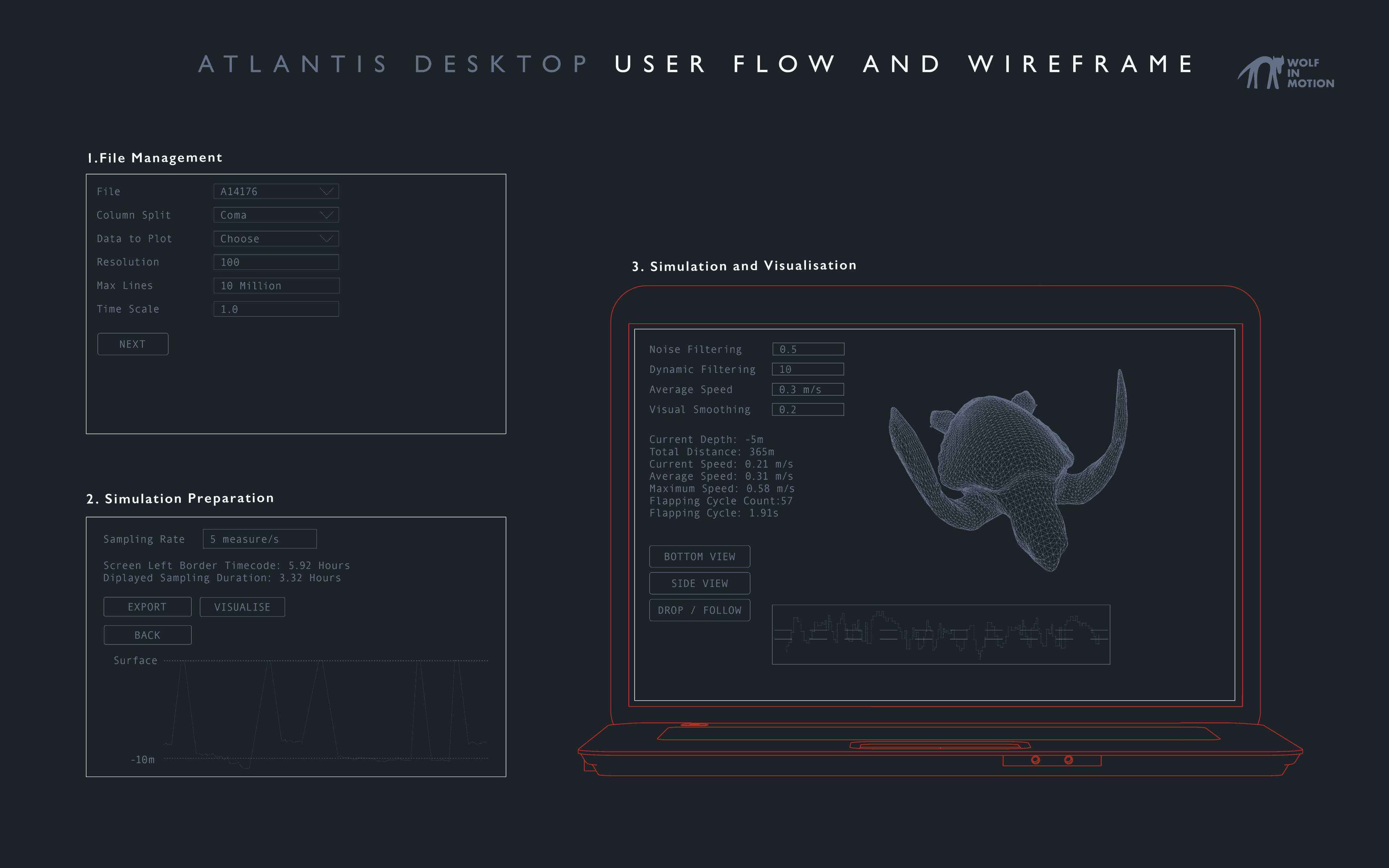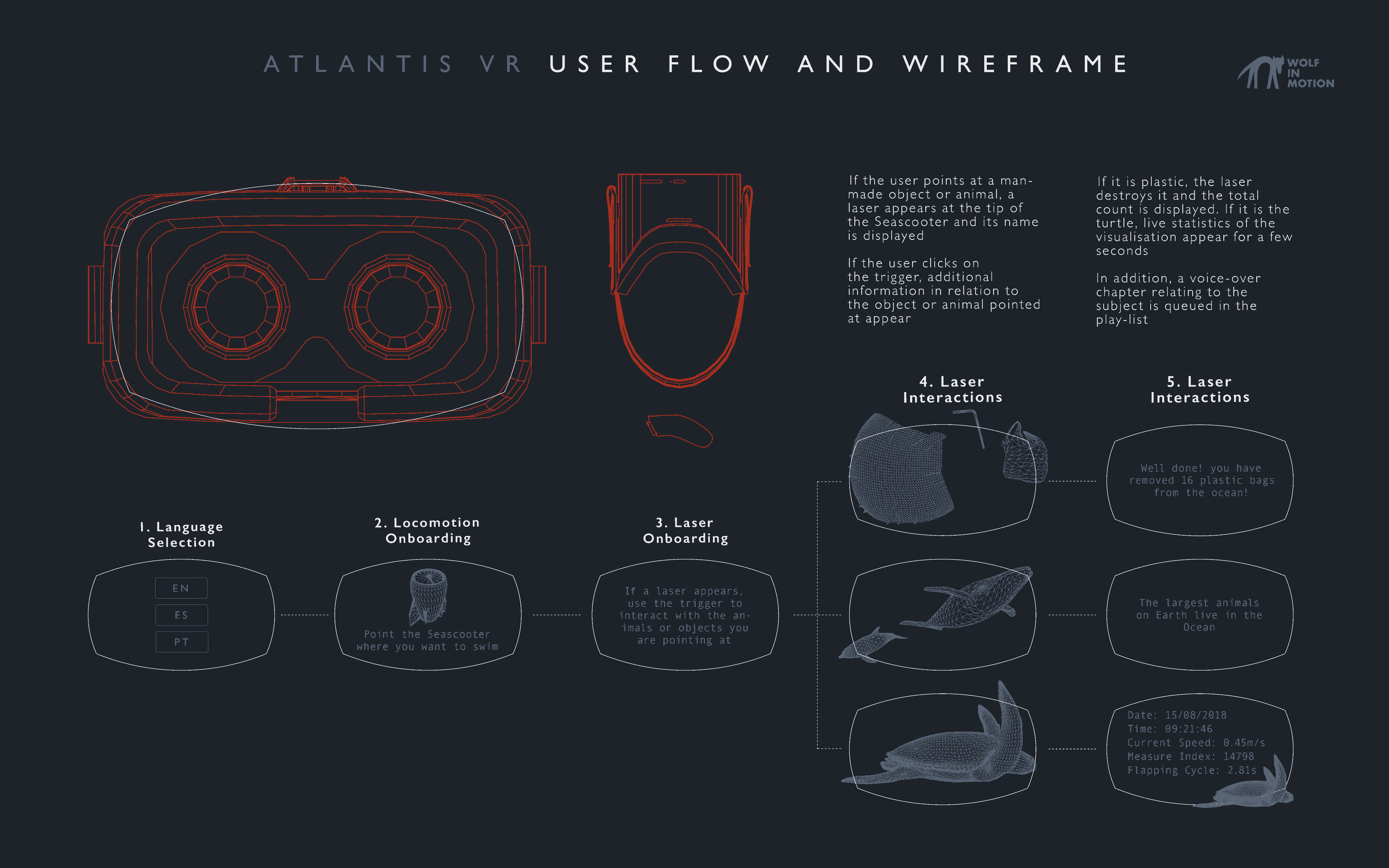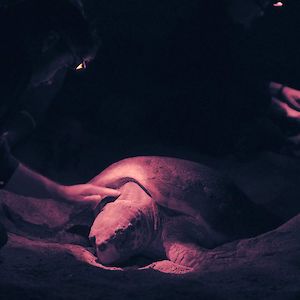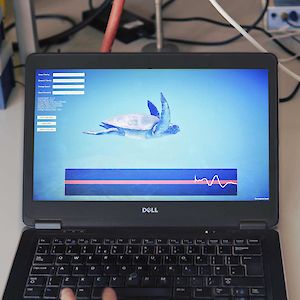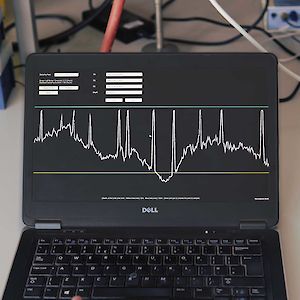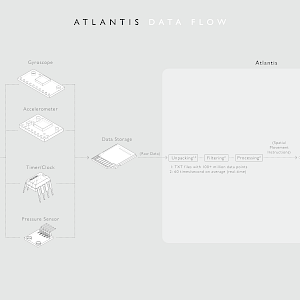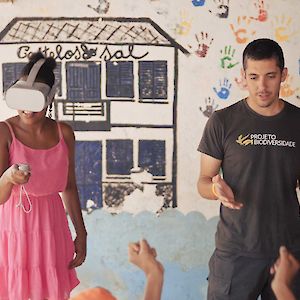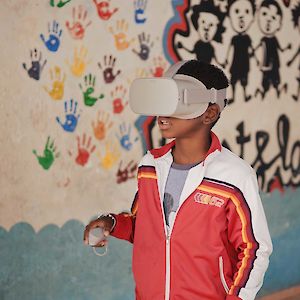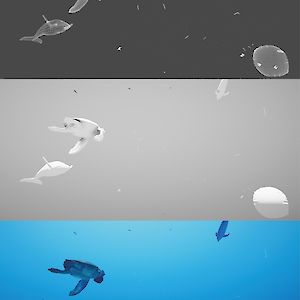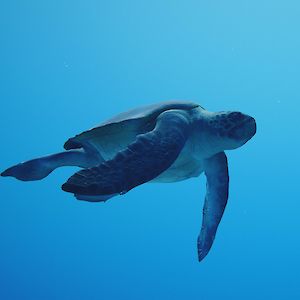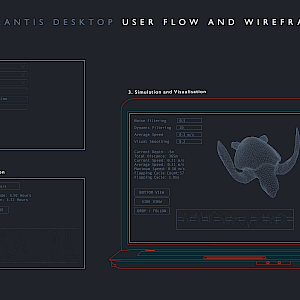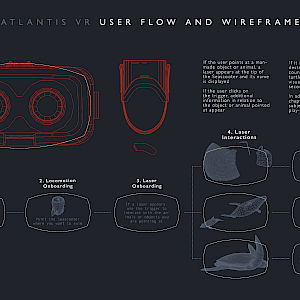QMUL
Atlantis
A New Way to Protect Turtles
Wolf in Motion designed a set of 3D tools for scientists to visualise spatial movements of sea turtles and protect them better
CLIENT
Queen Mary University of London (QMUL)
THE CHALLENGE
Create tools for scientists to visualise spatial movements of sea turtles and protect them better
THE OUTCOME
A 3D software to analyse swimming data collected on real turtles and a VR application to educate school children in Cape Verde
IMPACT
Atlantis helped discover feeding behaviours where they were previously thought impossible, bringing evidence to expand no-fishing zones around Cape Verde. As a VR educational tool, Atlantis has been used with over 3000 schoolchildren to raise awareness around turtle poaching and the effects of plastic pollution.
AWARDS
A research tool
Our studio was briefed by a team of scientists from Queen Mary University of London (QMUL) to help them with data visualisation. This data is captured with a device of their own design on Loggerhead sea turtles in Cape Verde. The team saw that a better understanding of sea turtles’ behaviour is paramount to help protect the endangered species. Ultimately, it guides the definition of areas of priority protection.
The scientists had been using movement tracking analysis tools but their interpretation was complicated by the large amount of data. Data for one turtle has up to 120 million points representing 2 weeks of continuous recording, 7 points a second. The coding and plotting to analyse the data was described as ‘tedious’ and corrupted sections (such as implausible acceleration) were hard to pick out.
Our studio’s first objective was to simplify the process of data analysis for the scientists by making it visual. If data is attractive, it is better for publications, for promotion and for fundraising.
We started by collaborating with them to understand their methodologies and needs. Trying to analyse the data ourselves by using their tools, helped us realise the complexity of the task. We elaborated a first swimming model using the available data from the sensors. The scientists offered to test it against video sequences they had obtained from mounting GoPros on turtles. In the long run these side by side comparisons would prove the quickest way to check the accuracy of our model.
Once done with the core engine, we created a minimal user interface based on the scientists' work habits. The 3D model of the turtle was sculpted from reference pictures provided by the scientists.
In its final research version, Atlantis centres the turtle on the screen to enable direct observation of behaviours in 3D. Raw sensor data is displayed underneath for control while reading can be played, paused, reversed like with a video. This can be done directly or using the dive overview.
Guided by observations from inputting old data into Atlantis, the QMUL scientists found that 30% of dives previously thought to be sleeping are actually feeding dives. The publication of these results is pending. It will be used to lobby for ‘no-fishing’ zones around Cape Verdean coast to protect feeding grounds. A BBC crew came specifically to film the findings in a documentary. Dr C. Eizaguirre, head of the QMUL team, explained that the Atlantis simulator and new research born from it has been used as a fundraising tool opening up new opportunities.
An Educational VR Application
During the course of the project, the scientists introduced us to Project Biodiversity, one of the NGOs they collaborate with in Cape Verde, where they conduct a large part of their field research. Together, they spread awareness about the plight of sea turtles with regard to plastic pollution and poaching.
What if Atlantis could help on that front too?
The idea for the virtual reality educational application came naturally as we witnessed the excitement of those we would show the prototypes to. In fact, few realise but we have used the very same swimming model and swimming data for both the research tool and the VR application.
This means that, as an experience, Atlantis is probably closer to witnessing a real turtle dive than actually swimming next to one (they change behaviour when in proximity of humans). Also it is relatively accessible, as opposed to diving. For the fun part, we designed a zero-emission virtual seascooter to swim alongside the turtle. For the educational part, we added some imposing marine animals, sneaky plastic straws and bags (they kill turtles) and giant ghost fishing nets (they kill everything).
The resulting VR educational extension allows anyone to witness a real turtle diving behaviour while learning by swimming and collecting points as a narrator provides information about the ocean, both in english and portuguese.
NGO Project Biodiversity’s Co-director A. Taxonera explained that over 3000 schoolchildren across the UK, Spain and Cape Verde have seen the VR experience. It was even used in a prison seminar, helping raise funds and awareness around turtle poaching and plastic pollution.
Through children, the conservation message reaches their families, making them aware of how they can eradicate local plastic pollution and illegal hunting. Taxonera added that Atlantis is often the first time Cape Verdeans see turtles in their natural habitat, helping develop empathy - before this, most would only see turtles when they come ashore for nesting at night.
Image above: Schoolboy in Cape Verde wearing an Oculus virtual reality headset to learn about turtles
Image above: Design breakdown of Atlantis virtual reality educational application
Image above: Close-up of swimming 3D turtle inside Atlantis
Two images above: User flow and wireframe of Atlantis
Contributors
Christophe Eizaguirre, Emma Lockley, Albert Taxonera, Fernando Pain, Emma Powell, Leonard Heuse, Samuel Iliffe and Guillaume Couche
Contact
Any question, idea, suggestion?
And follow us on Instagram to get the latest updates
